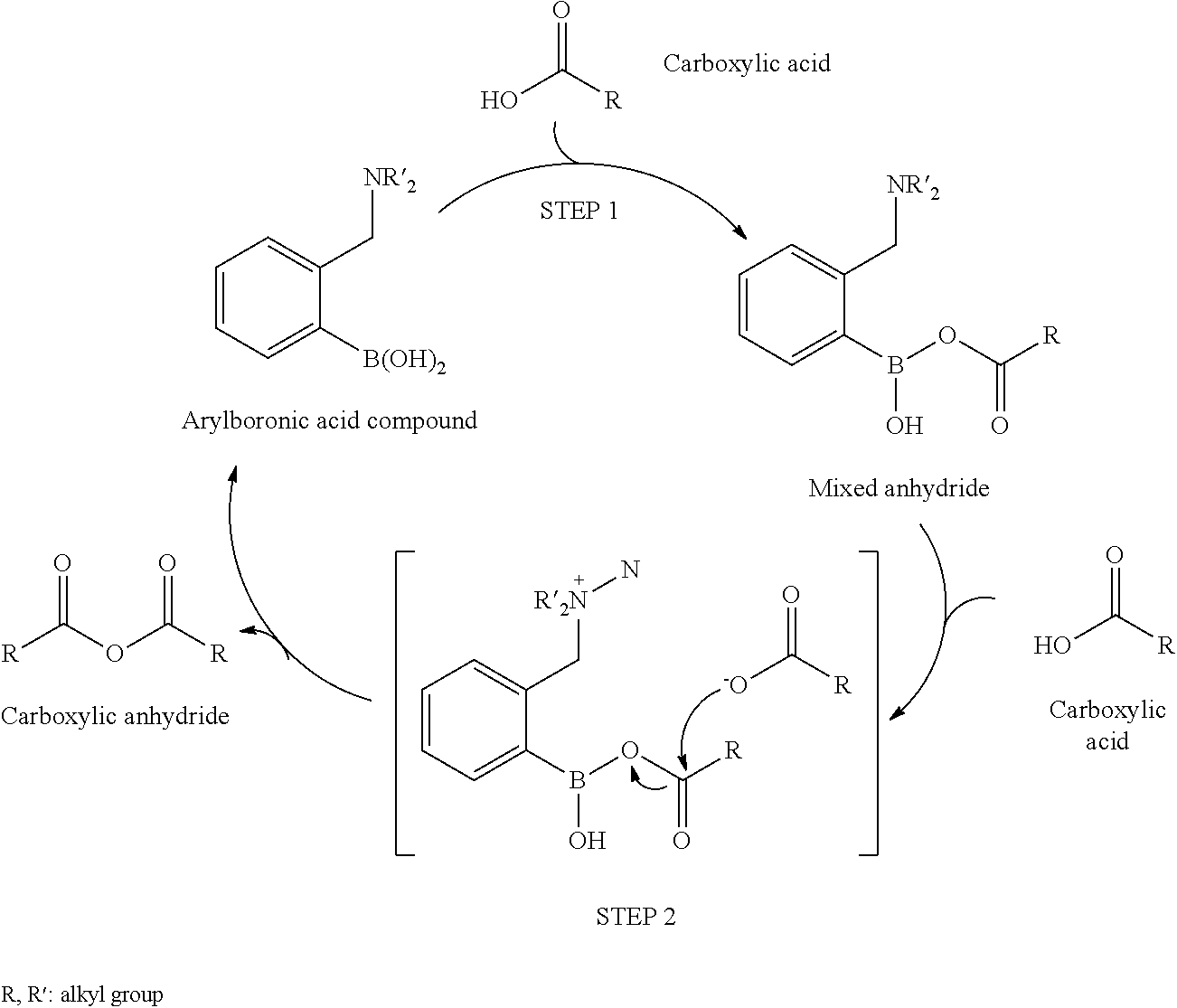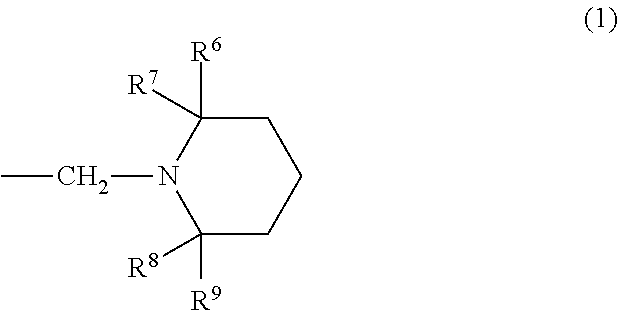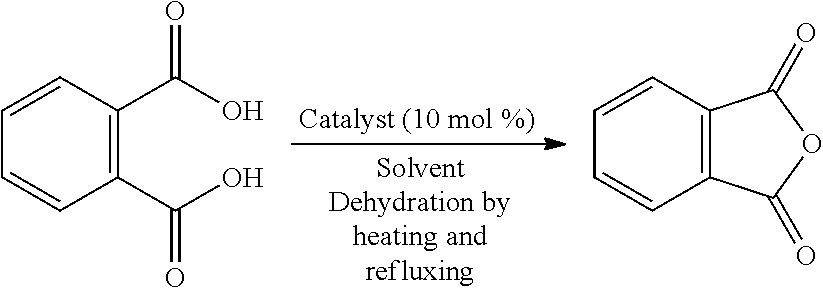Method for producing carboxylic anhydride and arylboronic acid compound
a technology of arylboronic acid and carboxylic anhydride, which is applied in the direction of group 3/13 element organic compounds, organic chemistry, chemistry apparatus and processes, etc., can solve the problems of difficult control of reaction and liable to occur corrosion, and achieve high yield
- Summary
- Abstract
- Description
- Claims
- Application Information
AI Technical Summary
Benefits of technology
Problems solved by technology
Method used
Image
Examples
example 1
[0024]Phthalic acid (2.5 mmol), 2,6-bis(diisopropylaminomethyl)phenylboronic acid (hereinafter, referred to as “boronic acid compound A”, 0.25 mol) as an arylboronic acid catalyst, and heptane (10 mL) as a solvent were added in a flask having a volume of 20 mL, and a column (small Soxhlet extractor) filled with dried molecular sieves 3A (approximately 3 g) was fitted to the flask. The mixture was heated for 12 hours under azeotropic reflux conditions with the removal of water. After the reaction mixture was cooled to room temperature, heptane was evaporated under reduced pressure. The crude product of phthalic anhydride thus obtained was analyzed by 1H NMR (CDCl3), and the yield thereof was calculated. When the same procedure was repeatedly performed a plurality of times, the yield was 72% to 81%.
[0025]In addition, the chemical shift (ppm) of 1H NMR was as follows; phthalic acid: δ 7.51-7.60 (m, 2H), and phthalic anhydride: δ 8.05-8.14(m, 2H).
examples 2 to 9
, Comparative Examples 1 to 4
[0026]In Examples 2 to 9 and Comparative Examples 1 to 4, in accordance with Example 1, phthalic anhydride was produced under the conditions shown in Table 1. The results are shown in Table 1. In addition, the result of Example 1 is also collectively shown in Table 1. As apparent from Table 1, in the case of no catalyst, phthalic anhydride was not obtained when heptane having a low boiling point was used as a solvent (Comparative Example 1), and when nonane having a high boiling point was used as a solvent, although phthalic anhydride was obtained, the yield was as low as 12% (Comparative Example 2). In addition, when p-TsOH, the catalyst disclosed in Patent Document 1, was used, although phthalic anhydride was obtained with a high yield of 88% (Comparative Example 3), since this catalyst was a strong acid, for example, corrosion of an iron-based reaction vessel was concerned. Furthermore, when 2,4,6-trimethylphenylboronic acid (having no dialkylaminomet...
examples 10 to 13
, Comparative Example 5 to 8
[0027]In Examples 10 to 13 and Comparative Example 5 to 8, in accordance with Example 1, a carboxylic anhydride was produced from a dicarboxylic acid under conditions shown in Table 2. The yield was calculated by analyzing a crude product using 1H NMR (CDCl3). Incidentally, the chemical shift (ppm) of 1H NMR was as follows; trans-cyclopentane-1,2-dicarboxylic acid: δ 2.9-3.15 (m, 2H), an anhydride thereof (cis-carboxylic anhydride): δ 3.5-3.7 (m, 2H), cis-cyclohexane-1,2-dicarboxylic-acid: δ 2.66 (m, 2H), an anhydride thereof: δ 3.33 (m, 2H), trans-cyclohexane-1,2-dicarboxylic acid: δ 2.66 (m, 2H), an anhydride thereof (cis-carboxylic anhydride): δ 3.33 (m, 2H), pyromellitic acid: δ 7.90 (s, 2H), a monoanhydride thereof: δ 8.25 (s, 2H), and a dianhydride thereof: δ 8.72 (s, 2H).
[0028]In Examples 10 to 13, the boronic acid compound A was used as the catalyst, and in Comparative Examples 5 to 8, p-TsOH was used as the catalyst. The results are shown in Tabl...
PUM
| Property | Measurement | Unit |
|---|---|---|
| boiling point | aaaaa | aaaaa |
| temperature | aaaaa | aaaaa |
| temperature | aaaaa | aaaaa |
Abstract
Description
Claims
Application Information
 Login to View More
Login to View More - R&D
- Intellectual Property
- Life Sciences
- Materials
- Tech Scout
- Unparalleled Data Quality
- Higher Quality Content
- 60% Fewer Hallucinations
Browse by: Latest US Patents, China's latest patents, Technical Efficacy Thesaurus, Application Domain, Technology Topic, Popular Technical Reports.
© 2025 PatSnap. All rights reserved.Legal|Privacy policy|Modern Slavery Act Transparency Statement|Sitemap|About US| Contact US: help@patsnap.com



